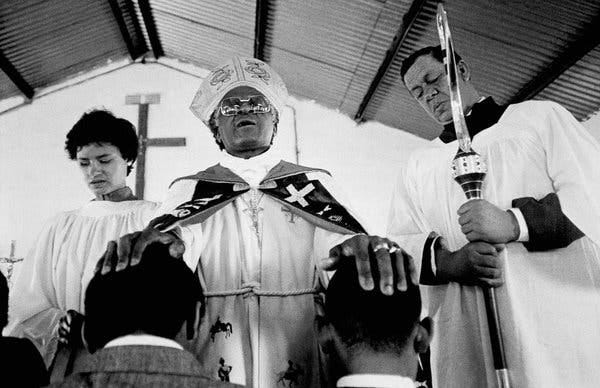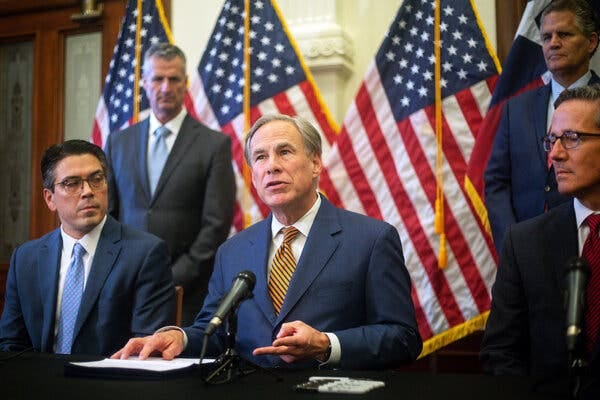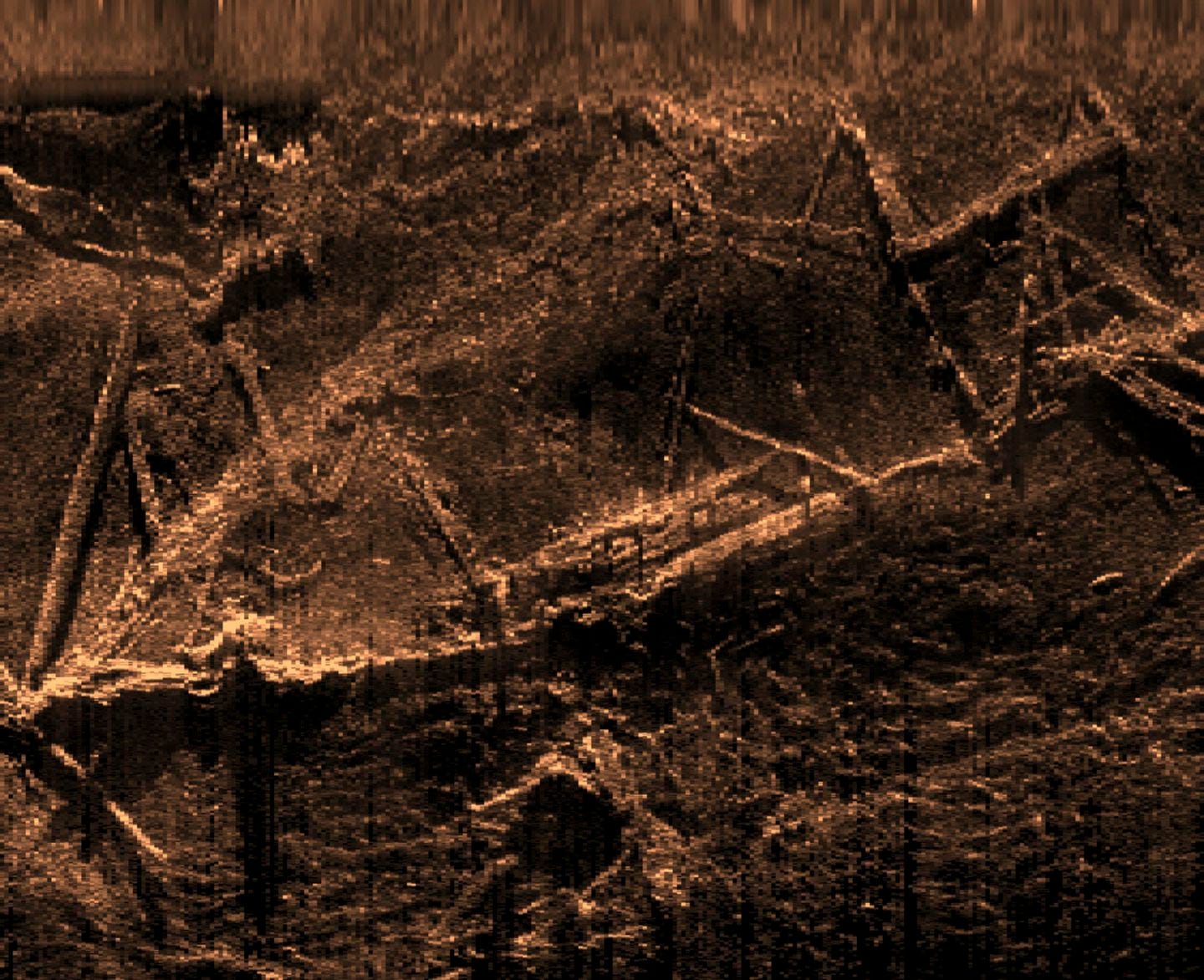The Full Belmonte, 12/26/21
NASA's James Webb Space Telescope launched Dec. 25 from French Guiana, the start of a historic mission designed to reveal the universe's earliest secrets. (Jody Amiet/AFP/Getty Images)
“BALTIMORE — NASA’s revolutionary James Webb Space Telescope is hurtling away from Earth and toward deep space on a long-awaited, high-risk mission that, if successful, will look deeper into the cosmic past than any telescope before.
The Webb blasted off Christmas morning from the European Space Agency’s spaceport in Kourou, French Guiana, on South America’s northeast coast, and early reports from NASA suggest the mission is going swimmingly.
This is, however, an unusually difficult mission involving an extraordinarily complicated instrument, and in the coming days and weeks the telescope will have to transform itself through hardware deployments, each of which is critical to the telescope’s ambitious astronomy.
Though relieved by the successful launch, NASA Deputy Administrator Pam Melroy acknowledged what everyone involved with the Webb knows: ‘We have some scary days ahead.’” Read more at Washington Post
“Desmond M. Tutu, the cleric who used his pulpit and spirited oratory to help bring down apartheid in South Africa and then became the leading advocate of peaceful reconciliation under Black majority rule, died on Sunday in Cape Town. He was 90.
His death was confirmed by the office of South Africa’s president, Cyril Ramaphosa, who called the archbishop ‘a leader of principle and pragmatism who gave meaning to the biblical insight that faith without works is dead.’
The statement did not mention a cause of death. Archbishop Tutu had fought an on-and-off battle with prostate cancer since 1997.
As leader of the South African Council of Churches and later as Anglican archbishop of Cape Town, Archbishop Tutu led the church to the forefront of Black South Africans’ decades-long struggle for freedom. His voice was a powerful force for nonviolence in the anti-apartheid movement, earning him a Nobel Peace Prize in 1984.
When that movement triumphed in the early 1990s, he prodded the country toward a new relationship between its white and Black citizens, and, as chairman of the Truth and Reconciliation Commission, he gathered testimony documenting the viciousness of apartheid.
‘You are overwhelmed by the extent of evil,’ he said. But, he added, it was necessary to open the wound to cleanse it. In return for an honest accounting of past crimes, the committee offered amnesty, establishing what Archbishop Tutu called the principle of restorative — rather than retributive — justice.
His credibility was crucial to the commission’s efforts to get former members of the South African security forces and former guerrilla fighters to cooperate with the inquiry.
Archbishop Tutu preached that the policy of apartheid was as dehumanizing to the oppressors as it was to the oppressed. At home, he stood against looming violence and sought to bridge the chasm between Black and white; abroad, he urged economic sanctions against the South African government to force a change of policy.

In 1986, he was named archbishop of Cape Town and became spiritual head of the country’s 1.5 million Anglicans, 80 percent of whom were Black.Credit...Steve Hilton Barber/Associated Press But as much as he had inveighed against the apartheid-era leadership, he displayed equal disapproval of leading figures in the dominant African National Congress, which came to power under Nelson Mandela in the first fully democratic elections in 1994.” Read more at New York Times
“NEW YORK (AP) — Ghislaine Maxwell reached her 60th birthday behind bars Saturday as she awaited the outcome of her sex trafficking trial.
The British socialite is scheduled to return to a Manhattan courthouse Monday to await word from a jury entering its third full day of talks after hearing over two dozen witnesses and viewing dozens of exhibits over three weeks.
Messages sent to her lawyer and a website where items expressing support for Maxwell are regularly posted were not returned Saturday.
Prosecutors said in their closing arguments last Monday that the crucial evidence was the testimony of four women who say they were sexually abused as teenagers by financier Jeffrey Epstein with help from Maxwell when she was his girlfriend, and later when she morphed into his close confidante and an employee valued highly enough that he gave her over $20 million.” Read more at Boston Globe
“CLEVELAND — As a fast-spreading new strain of the coronavirus swarms across the country, hospitals in Ohio running low on beds and staff recently took out a full-page newspaper advertisement pleading with unvaccinated Americans to finally get the shot. It read, simply: ‘Help.’
But in a suburban Ohio café, Jackie Rogers, 58, an accountant, offered an equally succinct response on behalf of unvaccinated America: ‘Never.’
In the year since the first shots began going into arms, opposition to vaccines has hardened from skepticism and wariness into something approaching an article of faith for the approximately 39 million American adults who have yet to get a single dose.
Now, health experts say the roughly 15 percent of the adult population that remains stubbornly unvaccinated is at the greatest risk of severe illness and death from the Omicron variant, and could overwhelm hospitals that are already brimming with Covid patients. In Cleveland, where Omicron cases are soaring, a hospital unit at the Cleveland Clinic that provides life support to the sickest patients is already completely full.
Compounding the problem, the pace of first-time vaccinations appears to be plateauing this month even as Omicron takes hold, and the numbers of children getting vaccinated and eligible adults getting booster shots are lower than some health experts hoped. Around 20 percent of children 5 to 11 years old have gotten a dose of vaccine. And only around one in three fully vaccinated Americans has gotten a booster.
It is still too early to know whether spiking numbers of Omicron infections in New York, the rest of the Northeast and the Midwest will be followed by a surge in hospitalizations and deaths. Early studies suggest the new variant may cause less severe illness than previous variants did.
But so far, the threat of Omicron is doing little to change people’s minds. Nearly 90 percent of unvaccinated adults said the variant would not spur them to get shots, according to a recent surveyfrom the Kaiser Family Foundation.
And some of the unvaccinated said that Omicron’s wily ability to infect vaccinated people only reaffirmed their decision to not get the shot. Others say the virus’s changing nature has stiffened their resolve not to get it.
‘It’s just another variant,’ said Dianne Putnam, an unvaccinated resident of Dalton, Ga., and president of her county’s Republican Party, who spent six days in the hospital this summer after contracting Covid-19. ‘Next year there’ll be another one. I mean, there’s going to always be different variants.’
Public-health campaigns and employee vaccine mandates have made progress since the summer at reducing the ranks of unvaccinated fence-sitters, people without easy access to health care and those who were hesitant but persuadable.
The remaining ranks of unvaccinated Americans steadfastly opposed to getting a shot tend to be younger, whiter and more Republican than those who have received the vaccine or are still considering one, surveys have shown.
At least six million first doses have been given in December since Omicron was first detected in the United States. But those numbers come with a caveat: Boosters can sometimes be misclassified as first doses, potentially leading to an overcount of how many Americans are getting their first shots, the C.D.C. has warned.
Booster shots, now the preoccupation of many state and federal health officials, have made up a greater portion of the roughly 1.5 million doses administered each day around the country in recent weeks. The rate of first doses given was similarly sluggish in the late summer, when roughly 300,000 were given each day, dropping even more before regulators authorized the Pfizer-BioNTech shot for young children in October, when the rate of first doses began climbing again.
The number of adults vaccinated has steadily improved since six months ago, when roughly 170 million had received a first shot, compared with around 220 million on Saturday, an increase driven in part by mandates.” Read more at New York Times
“ABILENE, Texas — Donna Boatright lives alone now in the modest one-story house where her husband, Benny, froze to death. Each day, she lights a candle by his photograph. Before bed, she tells him good night.
A slim 60-year-old who worked at the inn on a nearby Air Force base and let his beard grow each winter, Mr. Boatright died in his bed under layers of blankets, not long after a massive power failure plunged millions of Texans into the bitter cold and darkness in February. ‘I found him,’ Ms. Boatright, 73, said. Her own fingers were so frozen she had to be hospitalized.
Mr. Boatright was among more than 200 people in Texas who died after the state’s power grid failed during one of the worst winter storms in state history. Homes turned frigid. Water systems stopped running. Emergency workers struggled just to communicate.
The depth of the catastrophe, which left 4.5 million customers without power and caused as much as $130 billion in economic damages, caught elected officials off guard and rattled the confidence of Texans, who questioned how the electricity grid could fail to meet the demands of consumers in the nation’s energy capital.
But 10 months later, the state’s energy grid remains vulnerable, and the ability to keep the lights on is a central political issue in the state. It is a particular weak spot for Gov. Greg Abbott, who is seeking re-election to a third term next year. His most prominent challenger, Beto O’Rourke, the former El Paso congressman and Democratic presidential candidate, has repeatedly attacked Mr. Abbott over his handling of the crisis.
Despite an early burst of activity after the storm — state officials fired, a flurry of legislation passed, new rules issued — many of the problems that pushed the Texas electrical grid to the brink of a total collapse still remain, according to interviews with two dozen industry experts, elected leaders and current and former state officials.
Companies that operate the natural gas systems that froze in February, cutting off supply to power plants, have not been required to better prepare their equipment for this winter. Measures have not been taken to reduce demand for heat, particularly in poorly insulated homes. And the incentives in the Texas market — which has prioritized cheap electricity over reliability — are still largely in place.
Local efforts have also been slow to get off the ground. In Abilene, where all three water treatment facilities were unable to function when the power went out, city officials saw a need for backup generators. But money has not yet been approved to pay for them.
Mr. Abbott, pointing to new regulations requiring the winterization of power plants and new leadership at the state’s electricity regulator, has struck the same tone of optimism as he did before the power failure.
“Here’s the deal,” Mr. Abbott said on Feb. 13, two days before millions lost electricity. “We do, as a state, have the ability to ensure that we do not run out of power.”
Mr. Abbott made a similar promise last month: “I can guarantee the lights will stay on.”
But for the coming winter at least, whether Texans endure another crisis may depend on the vagaries of the weather at a time when climate change has raised average temperatures — parts of the state are expecting record warmth for Christmas — but also made extreme events more common.
Many Texans have reassured themselves that February’s weather was a once-in-a-lifetime phenomenon. But the type of cold that crippled the grid may be less rare than generally assumed, said the Texas state climatologist, John Nielsen-Gammon. He cited several historical precedents, including brutal cold spells in 1989 and 1983, and a freeze in 1899 that formed ice on Galveston Bay, along the Gulf of Mexico.
And perhaps more significantly, the most extreme and unusual temperatures in February actually came after the grid had already failed, he said, meaning a lesser winter cold spell could still cause problems in the future. ‘The worst part of the event may have been rare, but that doesn’t really address the vulnerability,’ Mr. Nielsen-Gammon said.” Read more at New York Times
“The girl shot by a Los Angeles police officer while she was in a dressing room Thursday was identified as 14-year-old Valentina Orellana-Peralta, the county coroner’s office said Saturday, as the Los Angeles Police Department put the officer on paid leave and prepared to release video evidence and radio calls from the shooting.
Los Angeles police officers responded to reports of an assault at a Burlington Coat Factory in North Hollywood on Thursday, where they found a suspect and fired at him, Dominic Choi, assistant chief of the Los Angeles Police Department, said at a news conference.
The suspect, who was identified by the coroner’s office as 24-year-old Daniel Elena Lopez, was killed by police.
Following the shooting, the authorities found a hole in a wall, Choi said, and behind it, found Valentina in the dressing room. She was pronounced dead at the scene, the department said in a statement. Her cause of death was a gunshot wound to the chest, according to the coroner’s office.” Read more at Washington Post
“Delta Air Lines, United Airlines, JetBlue Airways and American Airlines canceled more than 750 flights combined on Christmas Day, and cancellations are set to drag on through Sunday, upending plans during one of the busiest travel periods of the year.” Read more at USA Today
A sonar image provided by the Alabama Historical Commission showed the remains of the Clotilda, the last known US ship involved in the trans-Atlantic slave trade, which lies submerged near Mobile, Ala.SEARCH INC./ALABAMA HISTORICAL COMMISSION/LH
“In 2019, a team of researchers confirmed that a wooden wreck resting off the muddy banks of the Mobile River in Alabama was the Clotilda, the last known ship to bring enslaved people from Africa to the United States.
Now, the researchers say they have made another startling discovery: The wreck is remarkably well preserved. As much as two-thirds of the original structure remains, including the hold below the main deck where 110 people were imprisoned during the ship’s final, brutal journey from Benin to Mobile in 1860.
The researchers said it was possible that DNA could be extracted from the sealed, oxygen-free hull, which is filled with silt. Barrels, casks and bags used to stow provisions for the captives could also be found inside, they said.” Read more at Boston Globe
“An eagle from Asia has been traveling around North America from for more than a year, thousands of miles from home. While its not rare for a bird to lose its way, scientists say that after a year, this one is unlikely to find its way home.” Read more at NPR
“Fox News host Jesse Watters faced blowback for using violent rhetoric to explain how citizen journalists should confront Dr. Anthony Fauci in the hopes of going viral. Fauci called it part of ‘the craziness that goes on in society.’” Read more at NPR
“Big news this week in the millipede world: Scientists in northern England stumbled upon a fossilized millipede the length of a car. Also, a millipede with 1,300 legs has been found in Australia. It's a new record by far.” Read more at NPR
“H. Jackson Brown Jr., who embodied the uprightness, competence and sentimentality of the all-American dad in his self-help blockbuster, ‘Life’s Little Instruction Book,’ died on Nov. 30 at his home in Nashville. He was 81.
The death was confirmed by his son, Adam, who did not specify the cause.
Mr. Brown’s book consisted of 511 homespun commands, characteristically beginning with phrases like ‘Resist the temptation’ and ‘Show respect.’ They covered business (No. 34: ‘At meetings, resist turning around to see who has just arrived late’); conversation (No. 22: ‘Learn three clean jokes’); etiquette (No. 89: ‘Don’t let anyone ever see you tipsy’); love and friendship (No. 225: ‘When someone hugs you, let them be the first to let go’); the duties of the paterfamilias (No. 254: ‘Learn to show cheerfulness, even when you don’t feel like it’); and the pleasures of wholesome activities (No. 144: ‘Take someone bowling’).
From the summer of 1991, the year ‘Life’s Little Instruction Book’ was published, to the summer of 1994, it ruled The New York Times’s ‘advice, how-to and miscellaneous’ best-seller list. For a while it was No. 1 in paperback and hardcover simultaneously.” Read more at New York Times










